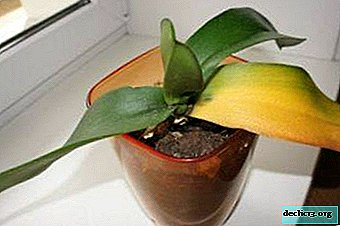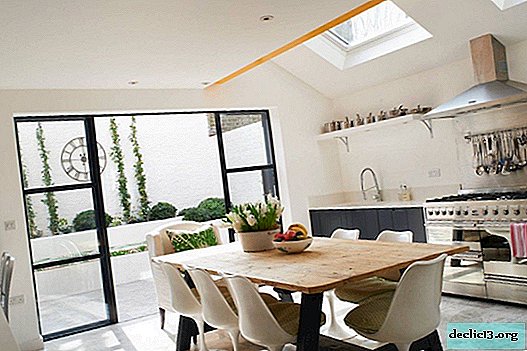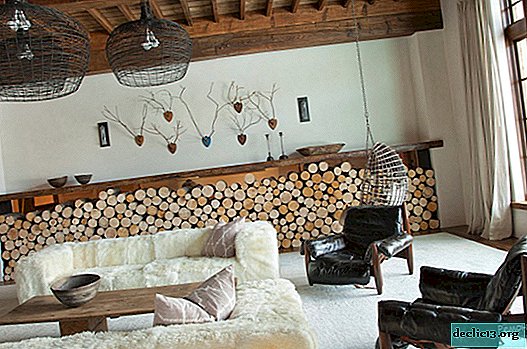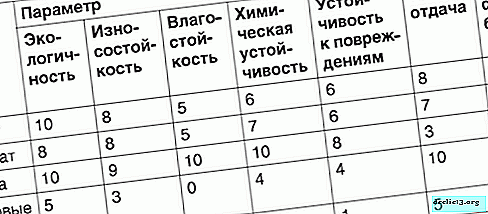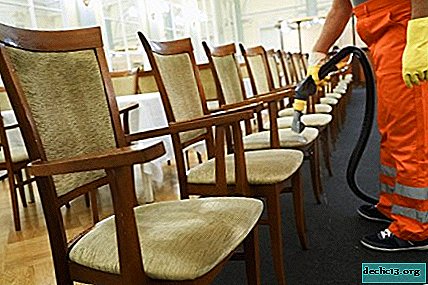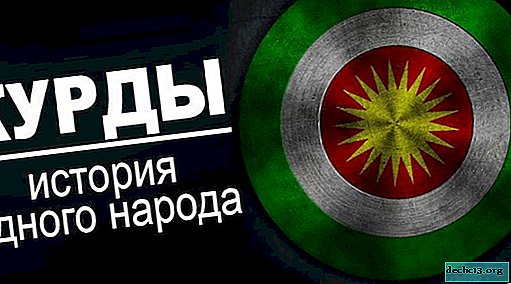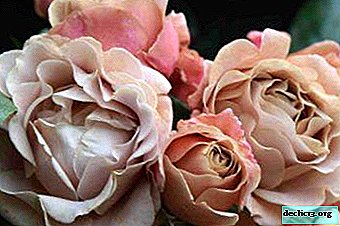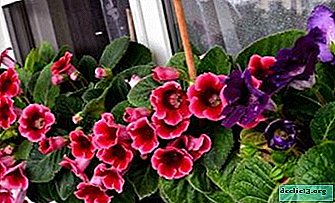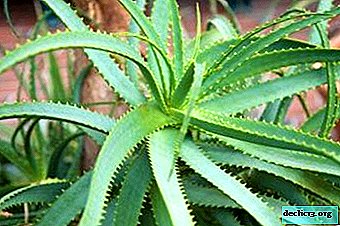What to see in Tel Aviv - the main attractions
Tel Aviv-Jaffa is an Israeli city by the Mediterranean Sea that combines ancient antiquity and vibrant modernity. In addition to trips to restaurants and night discos, his guests will find a rich cultural program: Tel Aviv attractions offer unique and completely diverse.
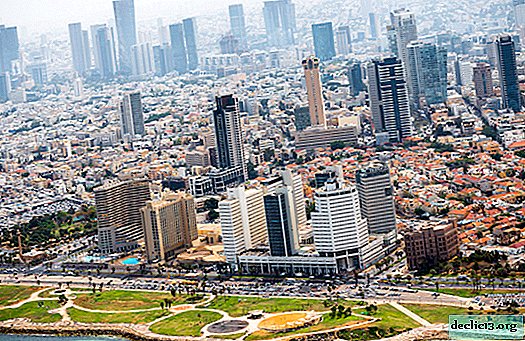
In this article, we compiled a selection and a brief description of several places in Tel Aviv, most often attracting the attention of tourists. We hope this will help many of you decide what to see in Tel Aviv first.
Jaffa Old Town
It is with Jaffa, the oldest part of Tel Aviv, it is desirable to begin acquaintance with this colorful city of Israel. The most interesting sights are concentrated here:
- Clock tower,
- unique floating tree
- ancient mosques and Christian churches,
- workshops of contemporary artists and sculptors,
- promenade with stunning city views,
- Old Jaffa port
- quarter with streets according to the zodiac signs.
And literally at every step there are small shops with colorful souvenirs and antiques, restaurants with unusual interiors and delicious food, bakeries with freshly baked aromatic bread of different varieties.

A detailed description of the attractions of the old city of Jaffa can be found here.
Tourists note! Be careful: the ancient narrow streets of Jaffa create a real labyrinth with stone walls. In order to fully enjoy the fabulous atmosphere prevailing here and not get lost at the same time, it is advisable to use the Tel Aviv map, which marks the sights of the city.
Tayelet Embankment
Along the famous beaches of Tel Aviv, there is a multi-kilometer promenade known as the Promenade (Hebrew sounds Taalet). It is most convenient to start a walk along the promenade from the old port of Jaffa.

Tayelet walks are a pleasure! It is always crowded, however, it creates an amazing impression of solitude and isolation from the crowd. The promenade is very clean, spacious, beautifully equipped and beautiful. And although the photos of this Tel Aviv attraction are always bright and picturesque, they cannot convey the full force of the impressions received from a real walk.
The eyes of curious tourists walking along one of the most famous promenades in Israel will open up many interesting sights, including:
 Charles Clor Park
Charles Clor Park- picturesque landscapes of Charles Clor's park;
- a monument to the victims of the terrorist attack, organized in 2001 at the Dolphi discoclub;
- a monument in the form of a ship, towering in London Square, where the streets of Yarkon and Bograshov intersect;
- Gordon outdoor pool, which collects water directly from the seabed;
- An old port in the north of Tel Aviv - it is waiting for tourists at the very end of the road along the promenade.
However, it’s very difficult to go through the entire Taalet in one walk: numerous cafes distract.
Old Port of Tel Aviv
On the north side of Tel Aviv is the sea harbor, which functioned in the 1938-1965-ies. Only in the 1990s, after 30 years of abandonment, the port was converted into a tourist area, which quickly gained fame as a popular city attraction.

The territory is very stylishly decorated here: picturesque walking paths are landscaped, there are many decent restaurants, and there are shops.
On weekdays, the port is calm enough, and on Shabbat and on other holidays there are always a lot of people.Find out RATES or book any accommodation using this form
Neve Zedek District
The first settlement, located outside of Jaffa, was founded in 1887 and was called Neve Tzedek. The developers were prosperous immigrants from Europe, so the streets of the Neve Tzevek district resemble at the same time the streets of Prague, Munich, and Krakow.

When Tel Aviv began to grow rapidly in the first half of the 20th century, Neve Tzedek began to resemble a provincial village, built in the middle of skyscrapers in the southeastern part of the metropolis. Miraculously surviving and avoiding demolition, this area acquired the status of a historical architectural monument.
Now the Neve Tzedek quarter in Tel Aviv is a tourist attraction that is always popular among tourists who come to Israel. Unusual residential buildings with unique facades, interesting galleries and museums, cozy cafes and restaurants - all this turns a leisurely walk through a living open-air museum into a colorful series of vivid pictures.
 Slush Bridge
Slush BridgeIn this quarter, you must definitely see the Shlush bridge, twin houses, the former Alliance school. And you also need to visit such local attractions as the museum of the artist and sculptor Nakhum Gutman, the center of theater and ballet art "Susan Dalal".
Rothschild Boulevard in the White City
White City - the so-called neighborhoods in the southwestern part of Tel Aviv, built up with buildings in the Bauhaus style. This international architectural style was especially popular in the 1920-1950s - then a lot of white structures were erected in Israel, and their greatest concentration is in Tel Aviv. In 2003, a huge complex of 4,000 buildings was declared by UNESCO as part of the World Cultural Heritage.

Rothschild Boulevard, which has become one of Tel Aviv's main tourist attractions, is located in the center of the White City. It originates from the Neve Tzedek district, and ends at the Habima Theater.

What is interesting about Rothschild Boulevard, what sights can you see here? In the middle of the boulevard there is a beautiful park area with rows of ficus and acacia, with a picturesque pond. You can take a deck chair and sit in it with a book from the free library located here. You can take a leisurely stroll in the shade without forgetting to look at the buildings:
- No. 11 (Yaakov's house),
- No. 23 (Golomb house),
- No. 25 (hotel "New York"),
- No. 27 (carousel house),
- No. 32 (hotel "Ben-Nakhum"),
- No. 40 (House of the Community Committee),
- No. 46 (Levine's house).

On the same street is the Independence Hall, in which in 1948 they signed the Declaration of Independence of Israel.
Rothschild Boulevard is also the financial center of Tel Aviv. Behind the old houses, in the second line, there are towers with offices of large companies.
Shook Carmel Market
The Shook Carmel Market (or simply Carmel) is the most popular of all Tel Aviv markets.

This is understandable, because it is the largest, moreover, it is located in the central part of the city: it occupies the entire Ha-Carmel Street, from Magen David Square to the end of Karmalit, as well as the neighboring streets of the Keren-Haitaynam District and the pedestrian zone of Nahalat-Binyamin. Another explanation for the popularity of this market among almost all Tel Aviv residents: prices here are lower than in stores.
Tourists note! Despite the fact that from all sides the cries of sellers are heard "I will give it only today for the best price", you always need to bargain. And you always need to be very careful: sellers can calmly demand a large payment in 2-3 or just don’t hand over a couple of hundred shekels, proving at the same time: "I passed everything !!!" The best option is to give money without change.

Shuk-Carmel is a typical eastern market, so to speak, a landmark that allows you to get to know the life and life of the people of Israel. The market is rather sloppy and noisy, but it’s bright, fun, interesting. Even if you do not make purchases, it will be interesting to just see. Here is a very rich assortment of all kinds of fruits and vegetables, a wide variety of cheeses and spices, and much more interesting things that Eastern sellers usually offer.
A bite to eat, and it’s very tasty, will work out here. If you enter Carmel from the side of Magen David Square, at the entrance there is a stall with burekas (puff pastry pies) - regular customers claim that it is very tasty. They also recommend visiting Hummus Ha Carmel or Ha Kitsonet, which serves delicious hummus with homemade pickles or meatballs. You can try excellent beetroot soup in Savtot-Mevshlot.
 Hummus Ha Carmel
Hummus Ha CarmelMost stalls are open from 8:00 until the beginning of the night. On Friday, Shuk-Carmel closes with the onset of lunch, and on Saturday, as elsewhere in Israel, is a day off.
Market address Shook Carmel: Allenby, King George and Sheinkin streets, Tel Aviv, Israel.
By public transport in Tel Aviv, you can get to it like this:
- from the new Central Bus Station with buses No. 4 and No. 204 or minibuses No. 4 and No. 5;
- from the Central railway station "Merkaz" by buses No. 18, 61, 82;
- from the railway station "University" by buses No. 24, 25.
Nahalat Binyamin Street
Near the Shook Carmel market there is another attraction, which is usually recommended to see all tourists. We are talking about the pedestrian street Nahalat Binyamin, connecting the northern entrance to Shuk-Karmel and Gruzenberg street.

Nahalat Binyamin is one of the oldest streets in Tel Aviv, with many atmospheric restaurants and cafes. It is quite pleasant to walk along it, see beautiful houses, sit in a cozy cafe.
But twice a week, on Tuesday and Friday from 9:00 to 17:00, Nahalat Binyamin cannot be recognized: a multi-colored bazaar opens on a pedestrian street where handicrafts are sold. There is something to see here, besides, you can buy quite interesting gizmos relatively inexpensively: paintings, jewelry, toys, lamps, decor for interiors.

Interesting! Almost every Friday, at the intersection of Nahalat Binyamin and Alenby Streets, you can watch the performance of the famous singer Miri Aloni in Israel.
Art Museum
The Tel Aviv Museum of Art is a famous landmark and one of the largest art museums in Israel. It occupies a whole complex of buildings:
- The main building on Shaul Ha-Melekh Avenue, 27;
- The Temple of Modernism is the new wing of the main building;
- The Lola Beer Ebner Sculpture Garden, adjacent to the main building;
- Pavilion of Contemporary Art by Elena Rubinstein on Tarsat Street, 6;
- Meyerhof School of Art on Dubnov Street.

The collection of paintings totals more than 40,000 exhibits. In the museum you can see the famous canvases by Claude Monet, Pablo Picasso, Alfred Sisley, Pierre-Auguste Renoir, Jackson Pollock, Paul Cezanne, Henri Matisse, Amedeo Modigliani. Tourists note that the hanging of the paintings is very convenient: the paintings do not interfere with each other, each has special lighting and they do not glare at all.
The main building of the museum is adjacent to the Lola Ebner Sculpture Garden (an outstanding Israeli fashion designer). Here you can see the sculptures of Calder, Caro, Majol, Graham, Lipschitz, Gucci, Cohen-Levy, Ulman, Berg. By the way, it’s worth remembering: leaving the museum on the street in the sculptural courtyard, you need to take a ticket with you, otherwise you won’t be able to get back into the building.

Admission Ticket Price:
- for adults 50 shekels,
- for pensioners 25 shekels,
- Children under 18 years old admission is free.
Important! At the entrance to the room you can take an easy portable high chair, a cane, and outer clothing and bags (if any) must be taken to the wardrobe.

The Museum of Art receives visitors at such times:
- on Mondays, Wednesdays and Saturdays - from 10:00 to 18:00;
- on Tuesdays and Thursdays - from 10:00 to 21:00;
- on Fridays - from 10:00 to 14:00;
- on Sundays - a day off.
Museum "Palm"
"Palm" - combat units formed even before the advent of the state of Israel. They were organized in 1941, when the threat of an attack by the Nazis on Palestine appeared. The invasion of the Third Reich soldiers in Palestine would mean the physical destruction of the Jews who lived in this country. Units "Palm" existed until 1948, and then they became part of the Israel Defense Forces.
Museum "Palm", dedicated to the history of the existence of Jewish troops, exists since 2000. From the descriptions and photos of the sights of Tel Aviv, it can be seen that it occupies a building resembling a fortress.
The format of the museum is interactive. Through videos, projections of the feature film and a variety of special effects, visitors are introduced to the history of the state of Israel. All that can be seen from the actual exhibits is a couple of photos and flags at the entrance.
Address at Palmach Museum: 10 Haim Levanon Street, Tel Aviv, Israel. From the city center there can be reached by bus number 24.
You can see the attraction at such a time:
- Sunday, Monday, Tuesday and Thursday - from 9:00 to 15:00;
- Wednesday - from 9:00 to 13:30;
- Friday - from 9:00 to 11:00.
Observation deck of the Azrieli complex

Another attraction of Tel Aviv is the Azrieli Business Center. It is interesting in that it consists of three adjacent skyscrapers of different shapes: a round tower (186 m), a triangular tower (169 m) and a square tower (154 m).
On the 49th floor of the round tower, at an altitude of 182 m, a glazed viewing platform Azrieli Observatory is equipped. From this platform you can look at the Diamond Exchange and panoramic views of Tel Aviv, as well as enjoy the Israeli coast of the Mediterranean Sea from Hadera (north) to Ashkelon (south) and the mountains of Judea. But from the reviews of tourists who visited there, a slightly different impression is formed about the Azrieli Observatory:
- many new high-rise buildings have already been built around the towers, overlapping a panoramic view;
- the observation deck consists of several connected rooms, some of which are used as a warehouse for storing tables and chairs from a nearby restaurant - this furniture creates the impression of a dump and closes a decent part of the review;
- the area is glazed, and glare on dirty glass does not affect the quality of the photos in the best way.
A high-speed elevator lifts visitors to the Azrieli Observatory observation platform - it is located on the 3rd floor of the tower. An entrance ticket (22 shekels) can be bought at the counter next to the high-speed elevator, but nobody checks the ticket at the top. The Azrieli Observatory is open daily from 9:30 to 20:00.

Tourists note! On the same 49th floor, next to the observation deck, in the lobby overlooking the sea, there is a restaurant. From its panoramic windows you can see much more attractive views, but only if you go there as a restaurant visitor. To get to the restaurant, you do not need to buy a ticket; you can go up to it by elevator for free.
The complex is located Azrieli at 132 Petach Tikvah, Tel Aviv, Israel. Given the fact that the Azrieli skyscrapers are one of the tallest buildings in the city, these sights can be seen very well from any point in Tel Aviv. It’s not at all difficult to get to them: the A-Shalom metro station is nearby and the Ayalon ring highway passes.
All the sights of Tel Aviv mentioned on the page are marked on the map in Russian.

